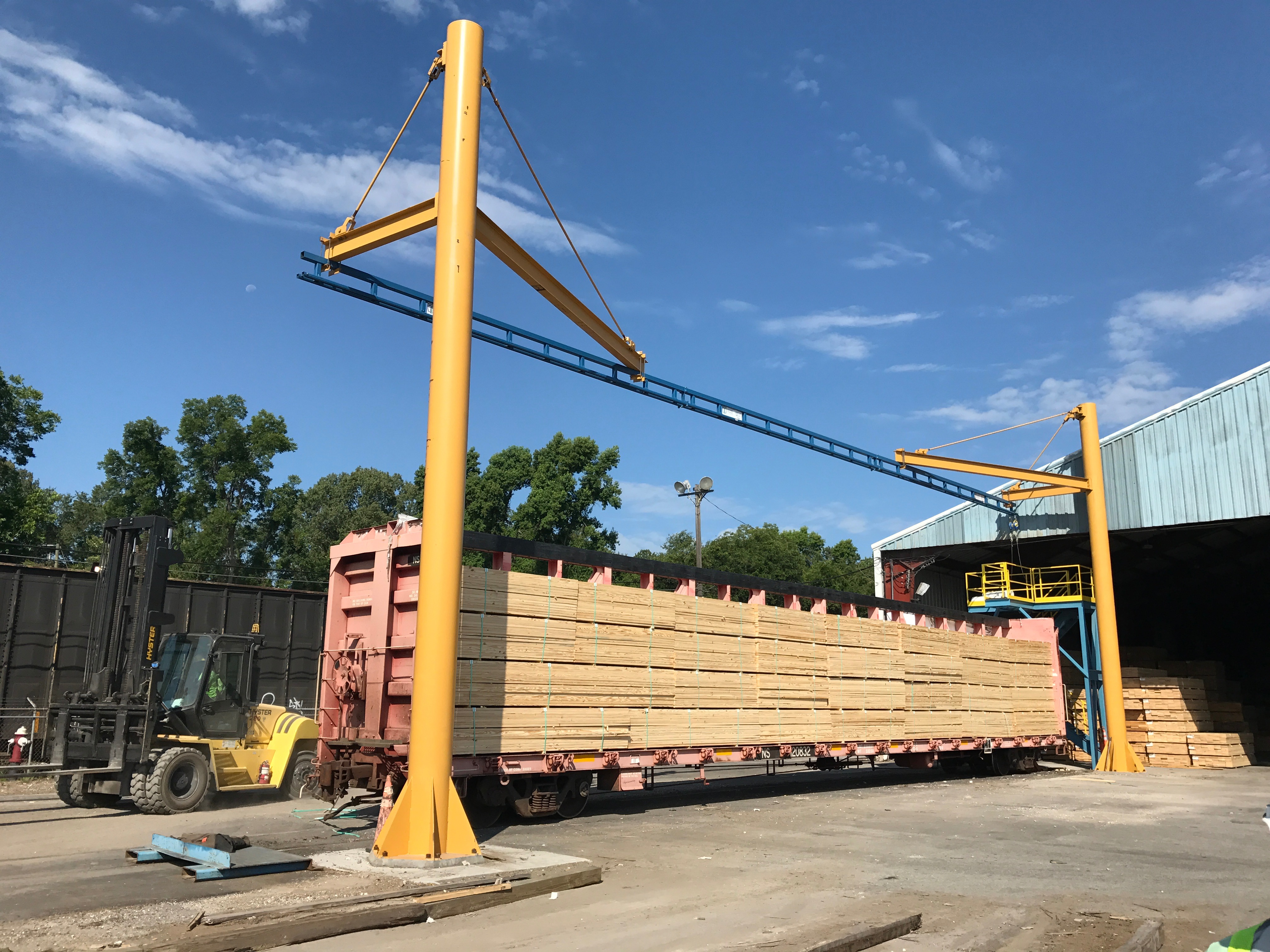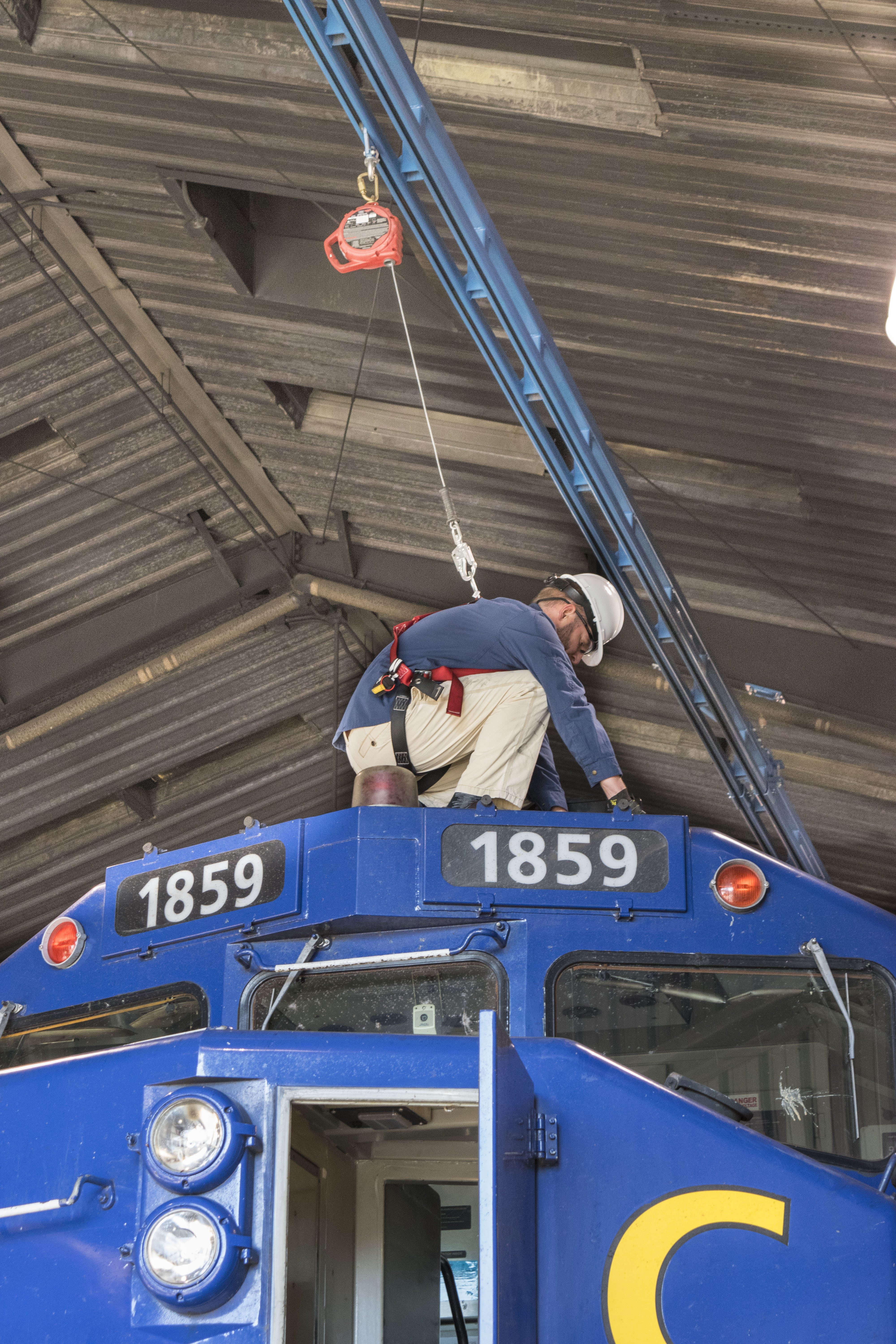The first step on the path to a sound fall protection plan is to identify problem areas within your warehouse that need attention. This requires a thorough walk through of your facility and a strong working knowledge of OSHA's current fall protection standards. Below are eight of the most common warehouse problems that can lead to slips and falls.
1) UNSECURED LOADING DOCKS

Roughly one out of every four warehouse injuries takes place on a loading dock. The majority of these injuries occur when workers or delivery personnel fall from the loading dock while they are loading and unloading goods. Falls also may result as delivery trucks make a premature departure from the loading dock area.
2) CROWDED WAREHOUSE AISLES
Failure to adhere to safety standards due to excessive inventory or crowded warehouse aisles can put your employees at increased risk for trips and falls. Additionally, your organization could face costly fines for failing to properly manage inventory and keep aisles clear. For instance, one New York company was fined over $160,000 for safety violations that included failure to safely stack merchandise and overcrowded aisles.
3) POORLY DESIGNED STAIRWAYS
"The concept of the handrail is basic. If you slip, trip, or begin to fall while descending a staircase, grabbing the handrail can break your fall and save you from serious injury."
- Auburn University, Risk Management and Safety Stairways can be extremely hazardous, especially if they are not properly designed or maintained. As you complete your walk through, be sure to carefully inspect your stairways to make sure that they are structurally sound, well-illuminated, and clean. Here are some common problems with stairways that can increase the risk of falls:
- Stairs with loose or missing handrails
- Dark stairwells
- Improperly sized riser height
- Missing or loose stair treads
- Debris or moisture on stairs
- Stairways without doors or signage
4) UNPROTECTED SKYLIGHTS AND PLATFORM HOLES
Platform holes, floor holes, and skylights are all fall danger zones for employees. OSHA cautions against the use of double chains as a means of protecting employees from falls at hole entrances. Entrances to ladder-ways must also be properly secured to protect workers from falls. OSHA suggests a self-closing gate as a proper means of preventing workers from falling.
5) ELEVATION DIFFERENCES WITHOUT THE PROPER ACCESS
Safety managers and engineers are responsible for protecting their employees from falls due to elevation differences. OSHA states that employers "must provide a stairway or ladder at all worker points of access when there is a break in elevation of 19 inches (48 cm) or more and no ramp, runway, embankment or personnel hoist is available." Facilities with elevation differences that lack proper access put employees at increased risk for falls and are subject to penalties.
6) CROWDED MEZZANINES

"Fall-related accidents also are an ever-present danger in elevated work areas such as mezzanines. Additionally, an increasing number of plants and warehouses have pit areas that workers can fall into if they are not guarded properly."
- Andy Olson, EHS Today
Businesses that are bursting at the seams sometimes use mezzanines to store equipment, products, files, and tools. This practice alone will not jeopardize employee safety. However, if mezzanines are overloaded with products and equipment, workers will be more likely to trip and fall from a mezzanine - especially if there are no safety gates or guardrails around the mezzanine.
7) MOISTURE AND SPILLAGE ON WAREHOUSE FLOORS
Workplace falls are not always the result of an employee tripping or plummeting from one level to a lower level. They are sometimes caused when moisture or debris accumulates on the floor. This is especially likely to happen during inclement weather when employees, delivery personnel, and visitors track water and snow indoors.
8) POORLY TRAINED EMPLOYEES
Employees who lack proper safety training create an unsafe work environment for co-workers and visitors. They also put their own lives at risk when they fail to wear the correct personal protective equipment or fail to follow safety procedures.
Learn more about how you can address these hazards here.